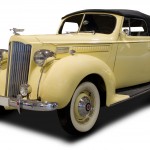A Different Kind of Car Insurance: Insuring a Collectible Car
Car values, like many other things, are starting to rise as the economy continues to recover. Among other things, this means that car insurance prices may be bumping up as well, including the unique insurance coverage needs that come with insuring a collectible car. However, there is some good news (when it comes to insurance) for those who own collectibles. 
Throughout the industry, mileage limits are being increased or lifted altogether; towing is becoming cheaper, free, or longer; and other benefits are being added as well. As an increasing number of ‘everyday’ folks reach the age where they have the financial backing to seek out and restore the cars of their youth (the ’69 Chargers and ’71 Chevelles, for example) the industry is growing to meet their needs.
So, what is the main difference between a collector-car policy and traditional auto insurance? Fairly straightforward; in exchange for limits on how often the car is driven (and sometimes where and by whom it is driven), a collector-car policy offers a premium as much as 35% less than a standard policy would cost on the same type of vehicle.
When shopping for collectible-car insurance, you should be certain that your coverage includes expenses related to restoration, spare parts, and your choice of garage. Also, look for a policy that will insure your car for an agreed value rather than a blue book or local-market value. This will allow you to increase the value covered as the actual value of the car appreciates.
While an antique and collector car policy only applies to rare cars likely to go up in value (and that are not used for daily driving), they may provide extra options such as a free evaluation of your collection or ‘diminution of value’ coverage that will pay out if your car is damaged or otherwise has its value reduced.
Because collectible car owners tend to be particularly careful and meticulous regarding their collections, insuring a rare car tends to be a lower risk affair. Many of these vehicles are intensively pampered, driven only for short drives or to exhibitions. The underwriters for the insurance companies are well aware of this fact, making collectibles generally less expensive to insure than your typical family sedan.




